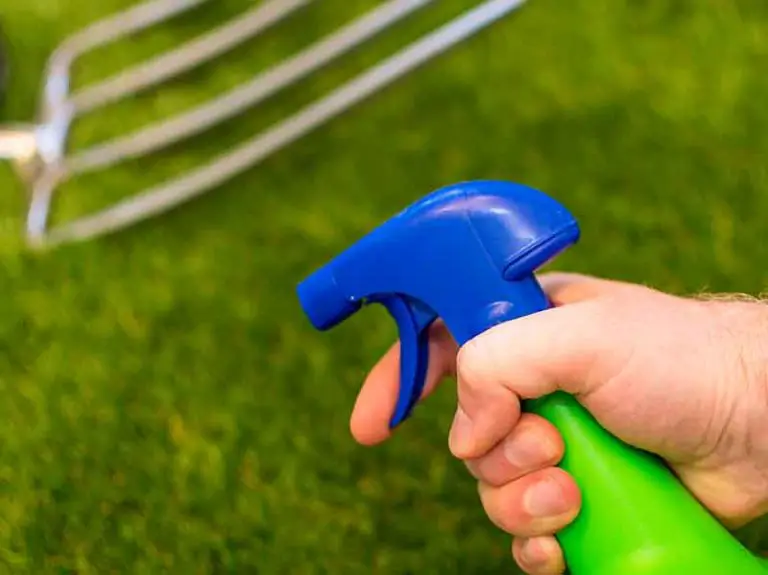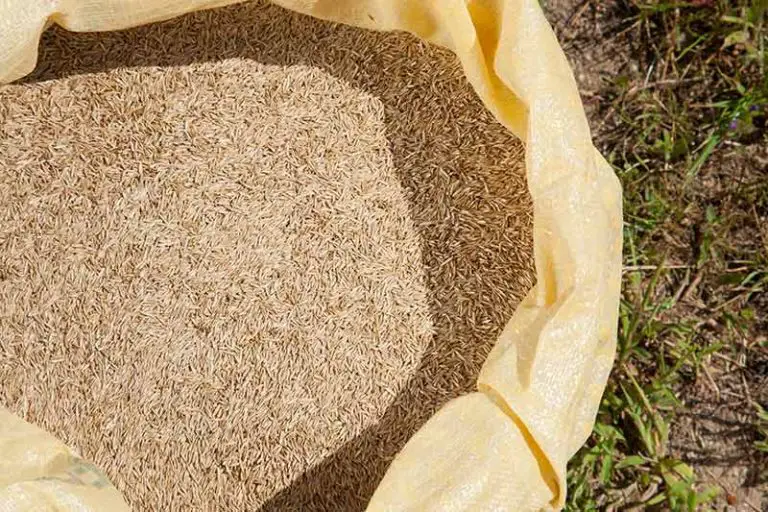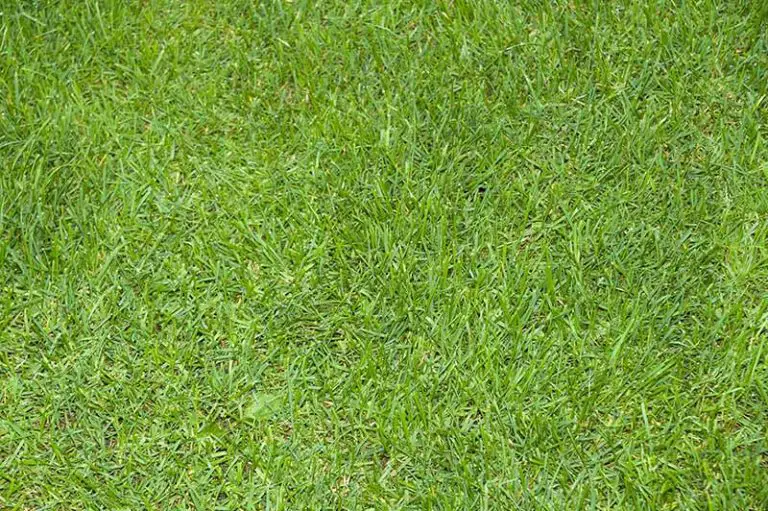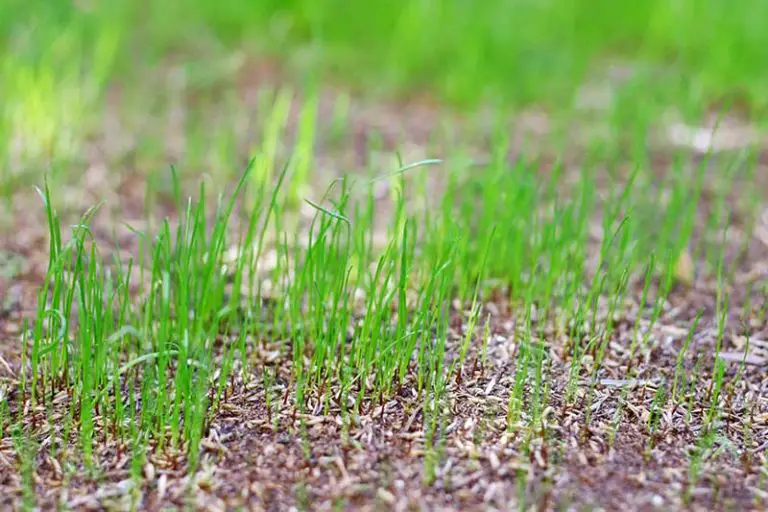Does Tall Fescue Grass Spread? How to Grow It
Being a hardy cool-season grass, tall fescue is a popular choice for lawns throughout the northern and transitional states. This grass is low maintenance and tolerant to a range of stressful conditions. However, tall fescue struggles to recover when turf damage does occur.
Due to its growth pattern, tall fescue doesn’t spread in the same way that other grass types do. Tall fescue grass won’t spread to fill bare spots on the lawn, and therefore, overseeding is necessary if you have a newly planted or patchy tall fescue lawn.
With that said, it’s still possible to grow a thick lawn with tall fescue seed, providing you follow the proper lawn care activities; these include fertilizing at the right time, watering enough, and mowing to the best height for the species.
What is Tall Fescue Grass?
Tall fescue is a cool-season grass type common to lawns across the northern and transitional states in the US. This grass type is highly tolerant of heat and drought, as well as being tolerant of cooler temperatures. In general, tall fescue is a hardy, low maintenance grass type that withstands a range of conditions and heavy traffic. However, the main drawback to tall fescue grass is that it has a limited capacity for self-repair when damage does occur to the turf.
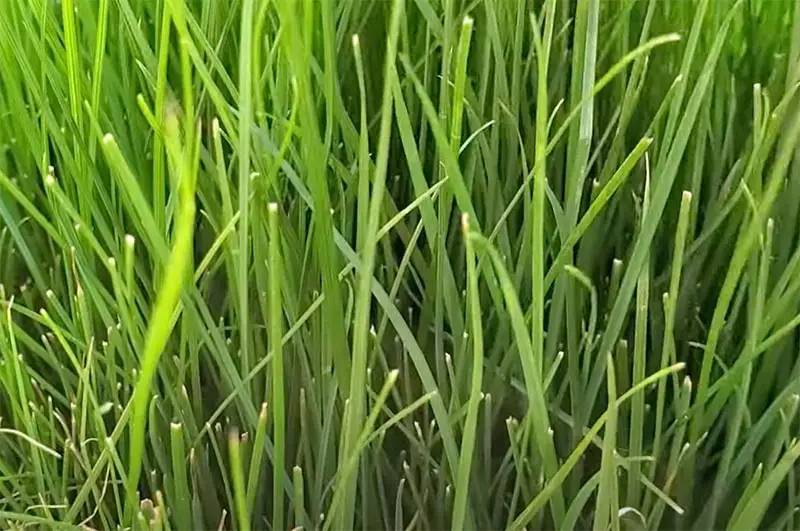
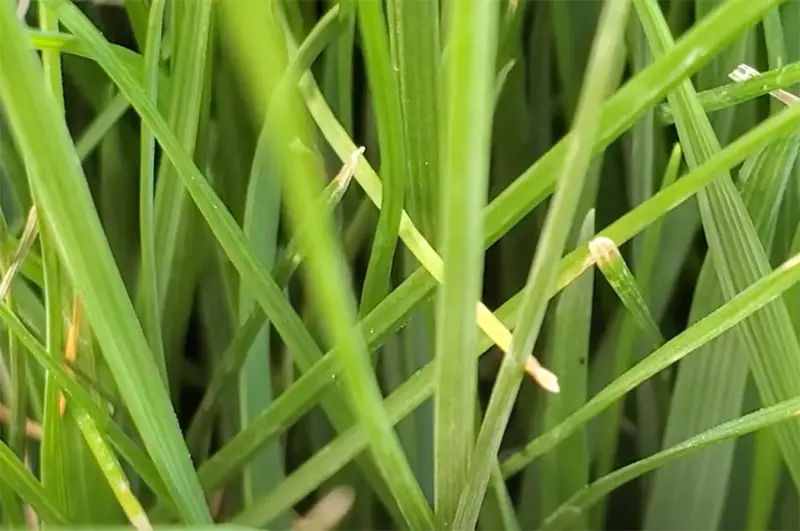
Does Tall Fescue Spread?
Although tall fescue grass does spread to some extent, it has a limited ability to do so. This grass is what’s known as a bunch-forming grass, meaning it spreads by growing tillers; these are leaf blades that grow from the crown of the plant, where the roots and blades meet. The grass plants are therefore able to get wider but the new growth is limited to their crown.
This process differs from the process used by the majority of other grasses, such as Kentucky bluegrass, another common cool-season grass. Self-spreading grass types are able to spread readily using both underground rhizomes and over-ground stolons; this gives them the ability to spread on their own. As tall fescue is a bunch forming grass, it lacks this capacity to spread and fill bare spots on its own.
How Long For Tall Fescue To Germinate?
After seeding or overseeding, it typically takes tall fescue around 2 weeks to germinate and become seedlings. This is dependent on how well you take care of the seeds in these crucial weeks after planting. Also, external conditions like the soil pH, soil compaction, and the weather will all have an effect on the seed’s germination rate.
In optimal growing conditions, you may see the first shoots from your tall fescue seeds in as little as 4 days after seeding or overseeding. Once the seedlings finish germination, they will quickly grow into an established lawn. Tall fescue is a fast-growing grass type and will gain 2 inches per week in height at full maturity.
How to Get Tall Fescue to Grow Faster
While tall fescue is a fast-growing grass by nature, you can boost your lawn’s growth by creating the optimal growing conditions for this grass type. To get tall fescue to grow faster, it’s important to fertilize, overseed, and water the grass at the right time. Additionally, mowing the grass to the best height and limiting the traffic on your tall fescue lawn will help the grass to grow quickly.
From the seeding process to the aftercare, we have provided some steps on how to get your tall fescue grass to grow faster below.
1. Seed Tall Fescue At Right Time of Year
Planting your tall fescue seeds at the right time of year will give them the best chances of a quick germination. The best time to plant tall fescue is in the spring, when air temperatures reach between 60 and 70°F. Alternatively, the next best time to plant tall fescue is in the early fall.
As tall fescue is a cool-season grass, it prefers milder temperatures and will suffer in high heat. When temperatures exceed 80°F, tall fescue will stop growing and turn dormant. This will affect your new grass if you plant in the summer when temperatures are too high. By planting in the spring, your grass plants have enough time to germinate before the summer; they will also have a root system extensive enough to draw water from deep in the soil, enabling them to survive in the heat.
2. Apply Tall Fescue Seeds Liberally
As tall fescue is a bunch-forming grass, it grows in concentrated bunches where the seed is originally sown. It’s therefore important to use the right seeding rate and application method to minimize the amount of bare patches on the resulting lawn.
The recommended seeding rate for tall fescue is to sow 7 to 9 lbs. of seed per 1,000 square feet of soil. We recommend using the Elite broadcast spreader from Scotts to enable easy, even, and widespread coverage of your seed. When planting the seed, set the settings on your broadcast spreader to half the recommended seeding rate; walk over the lawn in vertical strips to apply the first half of the seed, then walk over the lawn making another pass in horizontal lines to apply the second half. This will ensure as even a coverage of the seed as possible.
3. Fertilize Tall Fescue At Right Time
Once the grass plants mature, you can boost their growth by fertilizing the lawn. Timing is particularly important with tall fescue fertilization. The best time to fertilize tall fescue is first in the spring to early summer, then again in the fall; fertilizing at any other time of the year won’t benefit the lawn, as the grass plants will direct the nutrients to facilitate root growth for survival.
An additional tip for fertilizing tall fescue is to avoid overfertilization with nitrogen fertilizers. These fertilizers contain nutrient salts that have an adverse effect on the grass. In excess in the soil, nutrient salts can cause fertilizer burn, resulting in patches of grass turning yellow and dying off. In general, the recommended fertilizer rate for tall fescue is 1 lb. of nitrogen fertilizer per 1,000 square feet of soil.
4. Overseed Tall Fescue in Fall
If you seeded in the spring, follow up the process by overseeding the new turf again in the fall from October to November. This will help to fill in bare spots on the lawn between the bunches of tall fescue. Before overseeding, use a core aerator to aerate the lawn; this will help to break up soil compaction, in addition to enabling the seeds to fall deeper into the soil.
5. Water Tall Fescue Properly in Summer
Although tall fescue is relatively drought-tolerant, its growth rate will slow down in periods of drought or heat. Therefore, you’ll need to take more care with watering your tall fescue lawn over the summer to keep the grass healthy.
Over the summer, you should water tall fescue enough that you’re adding 1.5 inches of water per week. Add the full amount of water in one irrigation session. Avoid adding this amount in shorter sessions throughout the week; doing so would encourage the grass plants to grow shorter roots, thus reducing their heat and drought tolerance.
6. Mow Tall Fescue to Best Height
Mowing your tall fescue to the right height encourages proper root development, making it more resistant to stress from drought, traffic, and nutrient deficiencies. If you mow the grass too short, you can damage the turf beyond repair. This is also a risk if you take off too much of the blades’ height in one go.
For tall fescue, the best height to cut the grass is 3 to 3.5 inches. Mowing tall fescue to this height will result in a denser turf with a more extensive root system. Always follow the ⅓ rule when mowing; this rule dictates that you should never remove more than ⅓ of the grass blades’ total height per mowing session. Taking off more than ⅓ of the blade will limit the grass’ ability to self-repair and recover from the mow.
7. Limit Traffic on Tall Fescue Lawn
Tall fescue is a hardy grass type that tolerates a reasonable amount of traffic from people, pets, and cars. However, due to its growth habit, this grass has a harder time repairing itself when damage does occur.
For this reason, you should limit traffic on the lawn where possible while the grass is still filling in. Avoid parking cars or leaving heavy equipment on the lawn, and limit the amount of foot traffic it receives from people and pets. If you spot wear-damage on your tall fescue, you can repair the bare patches by overseeding.

